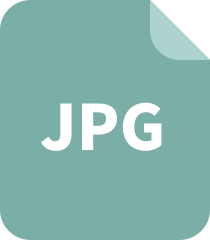# iMorpheus.ai - high availability sub-meter precise GPS
Through algorithm fusion of multiple data sources from different sensors such as lidar, radar, camera, gps, imu and point cloud, iMorpheus.ai brings about an high availability precision GPS measurement to outdoor robotics developer. iMorpheus integrate a number of advanced algorithm such as slam, kalman filter, ICP, feature selection and Gaussian Process.
#### We believe precise GPS signal should obtained by computing from cloud rather than measure the satellite, and soly software and cloud can solve the problem rather than expensive hardware. So that we committed into only software to solve the problem.
## Current Version - alpha
The alpha version is a software package operate under off-line mode and using point clould and GPS to give you accurate GPS. Each GPS signal produced also comes with confidence level.
## Installation Environment
### 1. Operating System
Prefer Ubuntu 14.04, Trusty
### 2. Robot Operating System - ROS
#### 2.1 About ROS
ROS provides libraries and tools to help software developers create robot applications. It provides hardware abstraction, device drivers, libraries, visualizers, message-passing, package management, and more. ROS is licensed under an open source, BSD license.
#### 2.2 Install ROS from
http://wiki.ros.org/cn/indigo/Installation/Ubuntu
#### 2.3 Learn more about ROS from
http://wiki.ros.org/ROS/Tutorials
#### 2.4 iMorpheus Perferred Version
ROS Indigo
### 3. Point Cloud Library - PCL
#### 3.1 About PCL
PCL is a large scale, open source project for 2D/3D image and point cloud processing.
#### 3.2 Install PCL from
http://pointclouds.org/downloads/
#### 3.3 Learn more about PCL from
http://pointclouds.org/documentation/
#### 3.4 iMorpheus Perferred Version
pcl-1.7.0
### 4.EIGEN
#### 4.1 About EIGEN
Eigen is a C++ template library for linear algebra: matrices, vectors, numerical solvers, and related algorithms.
#### 4.2 Install EIGEN from
http://eigen.tuxfamily.org/index.php?title=Main_Page
#### 4.3 Learn more about EIGEN from
http://eigen.tuxfamily.org/index.php?title=Main_Page
#### 4.4 iMorpheus Perferred Version
Eigen-3.3
## Module description
### 1. Modules
gpsCalibration has three modules include GPS, LOAM and Calibration.
#### 1.1 GPS module
This module processes GPS data and transforms them into local coordinate system.
#### 1.2 LOAM module
LOAM, Laser Odometry and Mapping, is a real-time method for state estimation and mapping using 3D lidar. The program contains two major threads running in parallel.
The "odometry" thread computes motion of the lidar between two sweeps, at a higher frame rate. It also removes distortion in the point cloud caused by motion of the lidar. The "mapping" thread takes the undistorted point cloud and incrementally builds a map, while simultaneously computes pose of the lidar on the map at a lower frame rate. The lidar state estimation is combination of the outputs from the two threads.
To learn more about LOAM, please refer to [paper](http://www.frc.ri.cmu.edu/%7Ejizhang03/Publications/RSS_2014.pdf).
This package is a simple modified copy of loam_velodyne GitHub repository from laboshinl, if you want to get laboshinl, pleaser go to: https://github.com/laboshinl/loam_velodyne
We modified some codes in laserOdometry.cpp and scanRegistration.cpp to match the data generated by the lidar we use, and added some codes on transformMaintenance.cpp to get lidar's track with timestamp and map. Both are in txt format.
#### 1.3 Calibration module
This module calls GPS module and LOAM module and use their data as input.
We use timestamped point set registration to match GPS and LOAM tracks in two steps. First, we calculate long LOAM segments and find their least absolute deviations with GPS track by means of iteratively re-weighted least squares. Second, the weights from the first step are used to register overlapping short LOAM segments with GPS track by means of weighted least squares.
The final output is calibrated GPS track. We only work on 2D GPS tracks in this version. Altitudes are set to a constant for the purpose of demonstration in Google Earth.
#### 1.4 Flowchart

## How to compile and run the project
1.*Make sure that you have the message bag. it includes follow message types
sensor_msgs/PointCloud2. and GPS coordinates matched with your run trail although
GPS is not accurate and not continuous in time.
If you don’t have lidar or GPS data, don’t worry, we have some data in advance for you to have a try.*
* [point cloud data](http://www.imorpheus.ai/download/dataForDemo/bagDemo)
* [GPS data](http://www.imorpheus.ai/download/dataForDemo/original_gps_data)
2.*Open the globalConfig.py in directory "iMorpheusAI/"
set needed file directory correctly.*
3.*In directory "iMorpheusAI", run command :*
```
$ catkin_make
$ source setup.sh
$ mkdir data
$ cd data
$ touch bag_list.txt
*add the point cloud data bag path*
```
4.*Okay, you can run ./run.py.*
5.*Finally, you get a global position system coordinates matched with your run trail. It is accurate and reliable!*
## About system input and output
### 1. Input
#### 1.1 .bag
A bag is a file format in ROS for storing ROS message data.
#### 1.2 GPS
The GPSRMC is protocol of GPSRMC's communication, and the format is:
$GPRMC,085223.136,A,3957.6286,N,11619.2078,E,0.06,36.81,180908,,,A\*57
### 2. Output
*The results of the program are stored in /data. We provide calibrated GPS in kml formats.
If you want to see GPS track in Google Earth, you need to use kml.
You can find Google Earth here: https://developers.google.com/kml/?hl=en-US.*
### 3. Example
#### 3.1 data download
* [point cloud data](http://www.imorpheus.ai/download/dataForDemo/bagDemo)
* [GPS data](http://www.imorpheus.ai/download/dataForDemo/original_gps_data)
#### 3.2 demo results


##### [See More](http://www.imorpheus.ai/demo/)
__AtYou__
- 粉丝: 3515
- 资源: 2177
最新资源
- 管家婆辉煌食品版TOP+13.11.zip
- 管家婆辉煌食品版TOP+13.02.zip
- 基于PSM算法的超声无损检测:Comsol模型参数化扫描与一键运行实践,基于PSM算法的超声无损检测:Comsol模型参数化扫描与一键运行实践,超声无损检测合成孔径PSM算法、对应comsol模型,效
- 管家婆辉煌食品版TOP12.9.zip
- gradle-7.6-bin.zip
- BTT与STT导弹六自由度Simulink完整模型及优化方案:涵盖总体设计与各模块数学模型,BTT与STT导弹六自由度Simulink完整模型及优化方案:涵盖总体设计与各模块数学模型,BTT导弹六自由
- 二阶多智能体系统固定时间一致性的优化策略,基于复杂网络的二阶多智能体系统在固定时间达成一致性的算法研究,二阶多智能体系统固定时间一致性 ,二阶多智能体系统; 固定时间一致性; 算法设计; 控制系统;
- 电力电子技术中基于新型变换器的动态电压恢复器(DVR)及其智能控制方法的模拟实现(论文复现含代码及详细说明)
- 异步电机控制:有速度传感器矢量控制算法的C代码与Simulink仿真模型实践,异步电机仿真控制:有速度传感器的矢量控制算法C代码及双闭环解耦Simulink仿真模型,异步电机有速度传感器矢量控制算法的
- 三相SVPWM整流器仿真与双闭环PI控制:电压外环与电流内环的讲解,输出电压调节至700V,单位功率因数运行及负载实验详解 ,三相SVPWM整流器仿真讲解:双闭环PI控制实现单位功率因数运行与负载实验
- 全耦合XFEM水力压裂程序:基于MATLAB的粘聚单元法与CZM(cohesive zone model)应用研究,基于全耦合XFEM的水力压裂模拟程序-通过Matlab实现粘聚单元法与CZM(co
- 无界鼠标,可以让两台电脑公用一套键鼠的小软件
- 河水溶解氧预测数据集,用于机器学习和预测应用
- MATLAB下的飞轮储能系统:三种控制模式下的充放电模型及无源与正负序分离PI策略构建,MATLAB环境下的飞轮储能充放电模型构建:控制模式详解及正负序分离PI策略研究,基于MATLAB搭建的飞轮储能
- VAR模型及拓展:从基础到前沿的时序分析方法研究与应用进展,基于VAR模型及拓展技术的深入解析与运用:包含TVP-VAR及各类VAR拓展模型的探究与应用,VAR模型及拓展 1.标准VAR模型:平稳性检
- 基于RS2指令的通讯例程:远程控制与设备互联的编程实践手册,3u RS2指令与打印机通信应用,全方位电脑远程协助与学习资料 附注:涉及外设通信和机器控制应用解决方案 ,3u 采用RS2指令与打印机通
资源上传下载、课程学习等过程中有任何疑问或建议,欢迎提出宝贵意见哦~我们会及时处理!
点击此处反馈




















